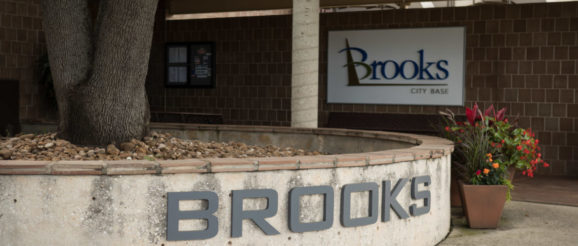‘Smart’ Streetlights Coming to City’s Innovation Zones this Fall

The City and CPS Energy are looking to partner to bring “smart” streetlights to San Antonio that can not only light city streets but also sense flooding patterns, check the temperature, measure air quality, and look for available parking spots.
The City and the utility said they will solicit bids from three vendors later this month to test their streetlight technology in the City’s three innovation zones: former U.S. Air Force base Brooks, downtown San Antonio, and the South Texas Medical Center.
Residents and visitors to those areas likely won’t notice when some streetlights begin employing smart technology. As early as this fall, after the City selects three contractors to pilot the technology, sensors will be attached to already existing lighting infrastructure in each of the three zones.
The contractors would test their equipment for about three months before the City begins evaluating the technological solutions they come up with. Based on that review, the City would issue another call for bids on a citywide smart streetlight project.
“We’re not looking final answers,” said Emily Royall, smart-city coordinator for the City of San Antonio, emphasizing the still-experimental nature of the project. “We’re just trying to understand what’s possible, what’s feasible.”
The pilot phase will help shed light on what can be achieved through streetlights outfitted with sensors. Among the ideas the City has outlined in its request for proposals are flood detection sensors, which can collect data for the San Antonio River Authority to build flood prediction models, and parking sensors that can integrate with a mobile app to show available on-street parking spots.
Some of the technology available on the market can use ambient noise detection to alert police when gunshots are fired or when a vehicle collision has occurred.
For CPS Energy, the value is clear. Smart streetlight sensors will make it easier for the utility to manage the 128,000 streetlights in its service area. The sensors allow the utility to find streetlights by their GPS coordinates and detect when a streetlight is malfunctioning.
“The new smart streetlights will give us greater visibility into our infrastructure,” said Richard Medina, CPS Energy’s vice president of grid modernization and engineering. “We wanted to partner with the City … and incorporate more of our smart-city applications.”
During the pilot phase the City said it aims to spend little to no money. The City and CPS Energy would use the initial testing phase as a proof-of-concept ahead of offering a full monetary contract.
The innovation zones are test beds for new technology the City pilots as part of its SmartSA program, an initiative that began in 2015 with the goal of pioneering new ways to serve the public.
The SmartSA partnership includes several government entities and local institutions, including the Bexar Appraisal District, the University of Texas at San Antonio, and VIA Metropolitan Transit.
In a survey released last year, 3,780 respondents said the City’s top challenges were parking, traffic congestion, and pedestrian safety. At Brooks and the Medical Center, respondents said their main concerns were walkability, lighting, and drainage. Downtown residents were concerned about walkability and lighting, too; access to services also was among their issues.
SmartSA projects are driven by community input and are designed to address citywide challenges. The City determined potential applications for the streetlights based on survey responses.
The smart streetlights will be installed in tandem with the implementation of the City’s Downtown Lighting Plan, which City Council approved in April. The master planning process for establishing lighting standards in the urban core began in 2016.
At an Innovation and Technology Committee meeting last week, City Council members Manny Pelaez (D8) and Roberto Treviño (D1) said they were excited about the ambiance-creating potential of the lighting plan and the smart streetlights.
“Lights have the potential to create placemaking and to be punctuations in the conversations of where you are,” Pelaez said. “I do think we need to be more focused as we move forward on the statement we’re making with the light.”
